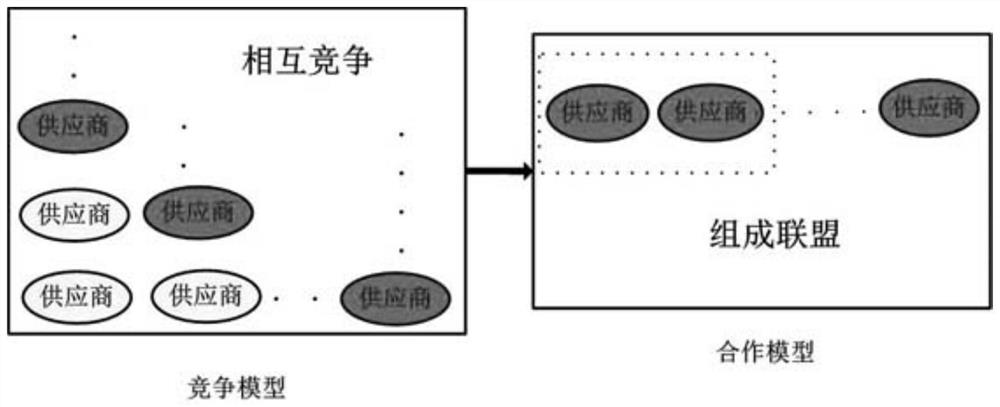A Renewable Energy Allocation Algorithm Based on Master-Slave Game
A renewable energy, energy technology, applied in computing, data switching current sources, instruments, etc., can solve the problem of energy supplier cooperation model between nodes without considering the needs of end users, and achieve the effect of improving revenue
- Summary
- Abstract
- Description
- Claims
- Application Information
AI Technical Summary
Problems solved by technology
Method used
Image
Examples
Embodiment
[0027] This embodiment is used in a wireless network, including the following steps:
[0028] In the first step, the energy supplier on the backhaul link sets an appropriate energy price.
[0029] In the second step, the operator sets subscription volume and service charges based on energy prices.
[0030] In the third step, the energy suppliers of each node form an alliance, and repeat the first and second steps to achieve a stable alliance structure.
[0031] Since the operator needs to take into account the price elasticity index when setting the data backhaul price, the different path loss of each location needs to be taken into account when setting the order quantity Therefore, the energy ordered by the operator from each supplier can be expressed as:
[0032]
[0033] Where b represents the price elasticity index, R represents the data transmission rate, α represents the number of users, and β represents the probability of users accepting the service price set by t...
PUM
 Login to View More
Login to View More Abstract
Description
Claims
Application Information
 Login to View More
Login to View More - R&D
- Intellectual Property
- Life Sciences
- Materials
- Tech Scout
- Unparalleled Data Quality
- Higher Quality Content
- 60% Fewer Hallucinations
Browse by: Latest US Patents, China's latest patents, Technical Efficacy Thesaurus, Application Domain, Technology Topic, Popular Technical Reports.
© 2025 PatSnap. All rights reserved.Legal|Privacy policy|Modern Slavery Act Transparency Statement|Sitemap|About US| Contact US: help@patsnap.com



